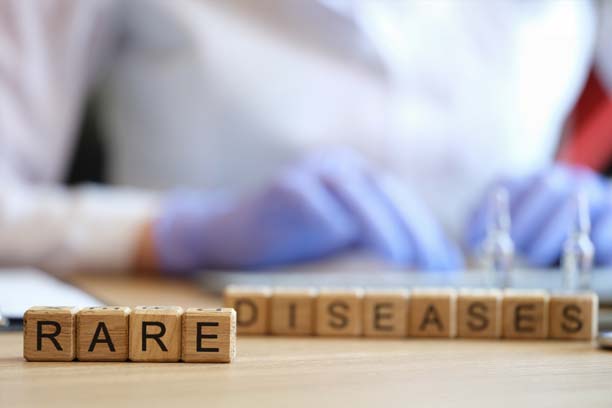Introduction
Managing cholesterol is changing as we learn more about how “bad cholesterol,” or LDL-C, can clog arteries and cause heart attacks or strokes. While medicines we’ve used for years help lower cholesterol, researchers are now focusing on a protein called PCSK9, which controls how the liver cleans LDL-C from the blood.1
Monoclonal antibodies that block PCSK9 have proven effective in lowering cholesterol and preventing heart-related events, but challenges such as frequent injections, high costs, and limited accessibility remain. These limitations have sparked interest in newer, more convenient therapies, including siRNA-based drugs like inclisiran, which offer a promising approach to long-term cholesterol management.1
Background on Traditional Therapies
There are several types of medicines available to lower cholesterol. Statins are the first-line drugs and can reduce LDL-C, or “bad cholesterol,” by up to 60%, while also helping lower triglycerides. They work by blocking an enzyme called HMG-CoA reductase, which leads the liver to remove more LDL from the blood, though they can sometimes cause muscle problems or increase the risk of diabetes.
Ezetimibe lowers LDL-C by about 20% by reducing the amount of cholesterol absorbed in the intestines and is often used when statins alone aren’t enough or aren’t tolerated.2
Bile acid sequestrants can lower LDL-C by 10–30% by helping the body use cholesterol to make more bile, but they can cause constipation and interfere with other medications.
Finally, PCSK9 inhibitors, including monoclonal antibodies and siRNA, lower LDL-C by 50–60% by protecting LDL receptors in the liver and are especially useful when statins aren’t enough or can’t be taken, with very few side effects.2
What is Leqvio (Inclisiran)?
Inclisiran, sold under the brand name Leqvio®, is a new type of cholesterol-lowering medicine developed by Novartis. It is the first siRNA-based drug approved for people with high cholesterol, mixed blood fat problems, heart disease, or genetic conditions like heterozygous familial hypercholesterolemia (HeFH) who need extra lowering of LDL-C. Inclisiran works using small pieces of RNA called siRNA, which can “switch off” specific genes that produce cholesterol, helping the liver remove more LDL-C from the blood.1
As the first siRNA therapy for cholesterol, Inclisiran represents an important step toward more personalized and precise treatments for managing blood cholesterol.1
Mechanism of Action
Inclisiran lowers “bad” cholesterol (LDL-C) by working directly in the liver, where most cholesterol is processed. It first attaches to a sugar molecule called GalNAc and a special receptor on liver cells called ASGPR, which helps it get inside the cells.
Once inside, it joins a protein complex called RISC, which can find and cut the instructions (mRNA) that tell the liver to make a protein called PCSK9.1
PCSK9 normally reduces the number of LDL receptors on liver cells, which are needed to remove LDL-C from the blood. By lowering PCSK9 levels, Inclisiran allows more LDL receptors to stay active, so the liver can clear more LDL-C from the bloodstream. This targeted process helps bring cholesterol levels down effectively.1
Key Differences: Inclisiran vs. Statins
Statins are the most widely used medicines for lowering cholesterol and have greatly reduced heart-related events. They work by blocking an enzyme in the liver called HMG-CoA reductase, which slows cholesterol production. This triggers the liver to make more LDL receptors, helping remove LDL-C, or “bad cholesterol,” from the blood.
Different statins and doses have varying effects, with maximal reductions of LDL-C seen with rosuvastatin 40 mg. Doubling a statin dose usually lowers LDL-C by an additional 6%. Statins can also reduce triglycerides and slightly raise HDL-C, though they do not lower Lp(a) and may sometimes increase it.2
Inclisiran works differently but with a similar goal of lowering LDL-C. It reduces the production of a protein called PCSK9 in the liver, which normally breaks down LDL receptors. By lowering PCSK9, Inclisiran allows more LDL receptors to stay active and clear LDL-C from the blood.
Large trials such as ORION-10 and ORION-11 have shown that Inclisiran can lower LDL-C by about 50% over long periods, along with reducing total cholesterol, non-HDL-C, apolipoprotein B, triglycerides, and Lp(a). Inclisiran is given as a subcutaneous injection of 284 mg, repeated at 3 months, and then every 6 months, with consistent effects across different patient groups, including those with diabetes or kidney disease.2
Comparison with PCSK9 mAbs
Monoclonal antibodies (mAbs) were the first widely used drugs to target PCSK9, a protein that reduces LDL receptors in the liver. By blocking PCSK9, mAbs like alirocumab and evolocumab help the liver remove more LDL-C, or “bad cholesterol,” from the blood.
These drugs are given as subcutaneous injections every two weeks or monthly and can lower LDL-C by 45–60%. Large trials have shown that, in addition to lowering LDL-C, they reduce the risk of future cardiovascular events by about 15% and can even stabilize and shrink plaques in the arteries. While effective, their high cost and complex prescription requirements limit broader use.3
Inclisiran, a first-in-class siRNA therapy, works differently from mAbs. Instead of blocking PCSK9 after it is made, inclisiran stops the liver from producing PCSK9 in the first place.
Inclisiran is given as a 284 mg subcutaneous injection at day 0, 90, 180, and then every six months, providing a long-lasting effect. Clinical trials have shown that inclisiran reduces LDL-C by about 50%, with a safety profile similar to mAbs, and only mild injection site reactions in some patients.3
Clinical Trial Evidence
The ORION trials tested inclisiran in patients with high cholesterol and varying cardiovascular risk, including those with familial hypercholesterolemia and a history of heart disease.
Across these studies, inclisiran showed a strong ability to lower cholesterol: it reduced LDL‑C (the “bad” cholesterol) by about 50%, total cholesterol by 31%, PCSK9 protein levels by 79%, and another important cholesterol-related protein called Apo‑B by around 40%. These results were consistent across different patient groups, including those with very high cholesterol or at high cardiovascular risk.4
Safety Profile
Inclisiran has shown a strong safety profile in clinical studies, with very few major concerns. The most common side effect is a mild and temporary reaction at the injection site, occurring in about 5% of patients. These reactions are usually short-lived and tend to decrease with repeated doses. Importantly, inclisiran does not cause significant problems with the liver, kidneys, muscles, or blood platelets.
Laboratory tests have shown no changes in key markers such as liver enzymes, creatinine, creatine kinase, or platelet counts after treatment. It also does not affect the cardiovascular system, with no differences in blood pressure, heart rate, or ECG readings compared to placebo. 1
Compared with other siRNA-based drugs, inclisiran was designed to minimize off-target effects and immune reactions, using a highly specific and stable siRNA sequence combined with a GalNAc conjugate to target liver cells effectively. While some patients have reported minor side effects like headache or diarrhea, overall inclisiran is considered well-tolerated and safe.1
Conclusion:
Inclisiran (Leqvio®) offers a new, long-lasting way to lower LDL-C by reducing PCSK9 production in the liver. Clinical trials show it can cut LDL-C by about 50% with consistent effects across different patient groups, while generally causing only mild, temporary injection site reactions. Its convenient dosing, initial, 3 months later, then every 6 months, makes it a promising option alongside traditional cholesterol therapies.
Note:
This content is for informational purposes only and is not a substitute for professional medical advice, diagnosis, or treatment. Always consult your healthcare provider before starting, changing, or stopping any medication, including inclisiran, to determine what is safe and appropriate for your individual health needs.
Disclaimer:
Rx4U procures prescribed medicines directly from manufacturers or authorized distributors. It does not claim ownership of any trademarks and complies with the provisions of the Trademark Act, 1999, particularly Sections 30 and 30(1) concerning ‘Fair Use’. It solely facilitates access to new launches through named patient import.
References
- Zhang Y, Chen H, Hong L, et al. Inclisiran: a new generation of lipid-lowering siRNA therapeutic. Front Pharmacol. 2023;14:1260921. Published 2023 Oct 13. doi:10.3389/fphar.2023.1260921
- Feingold KR. Cholesterol Lowering Drugs. [Updated 2024 Feb 12]. In: Feingold KR, Ahmed SF, Anawalt B, et al., editors. Endotext [Internet]. South Dartmouth (MA): MDText.com, Inc.; 2000-. Available from: https://www.ncbi.nlm.nih.gov/books/NBK395573/
- Arnold N, Koenig W. PCSK9 Inhibitor Wars: How Does Inclisiran Fit in with Current Monoclonal Antibody Inhibitor Therapy? Considerations for Patient Selection. Curr Cardiol Rep. 2022;24(11):1657-1667. doi:10.1007/s11886-022-01782-6
- Basit J, Ahmed M, Singh P, et al. Safety and Efficacy of Inclisiran in Hyperlipidemia: An Updated Meta-Analysis of Randomised Controlled Trials. Endocrinol Diabetes Metab. 2025;8(2):e70039. doi:10.1002/edm2.70039



